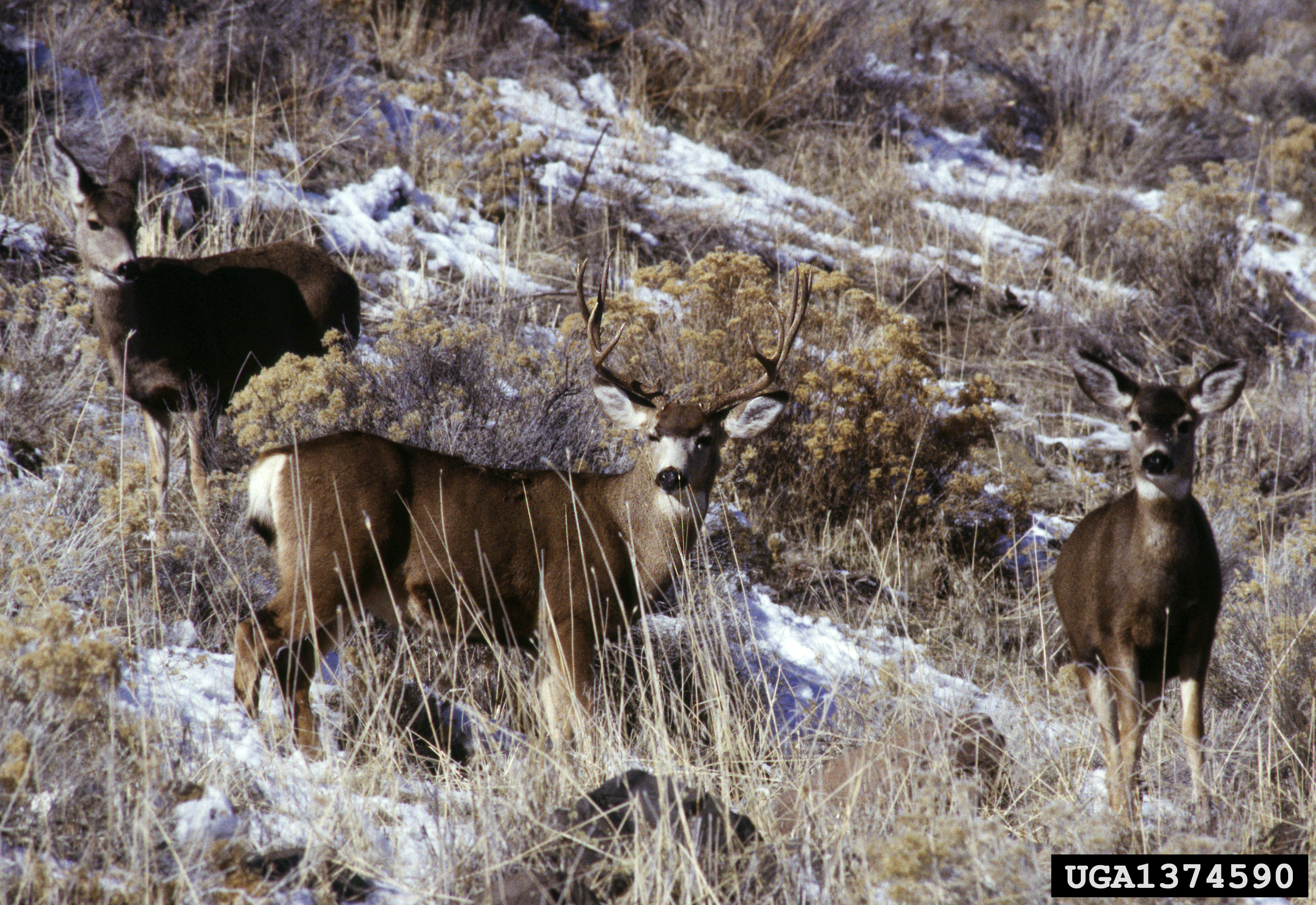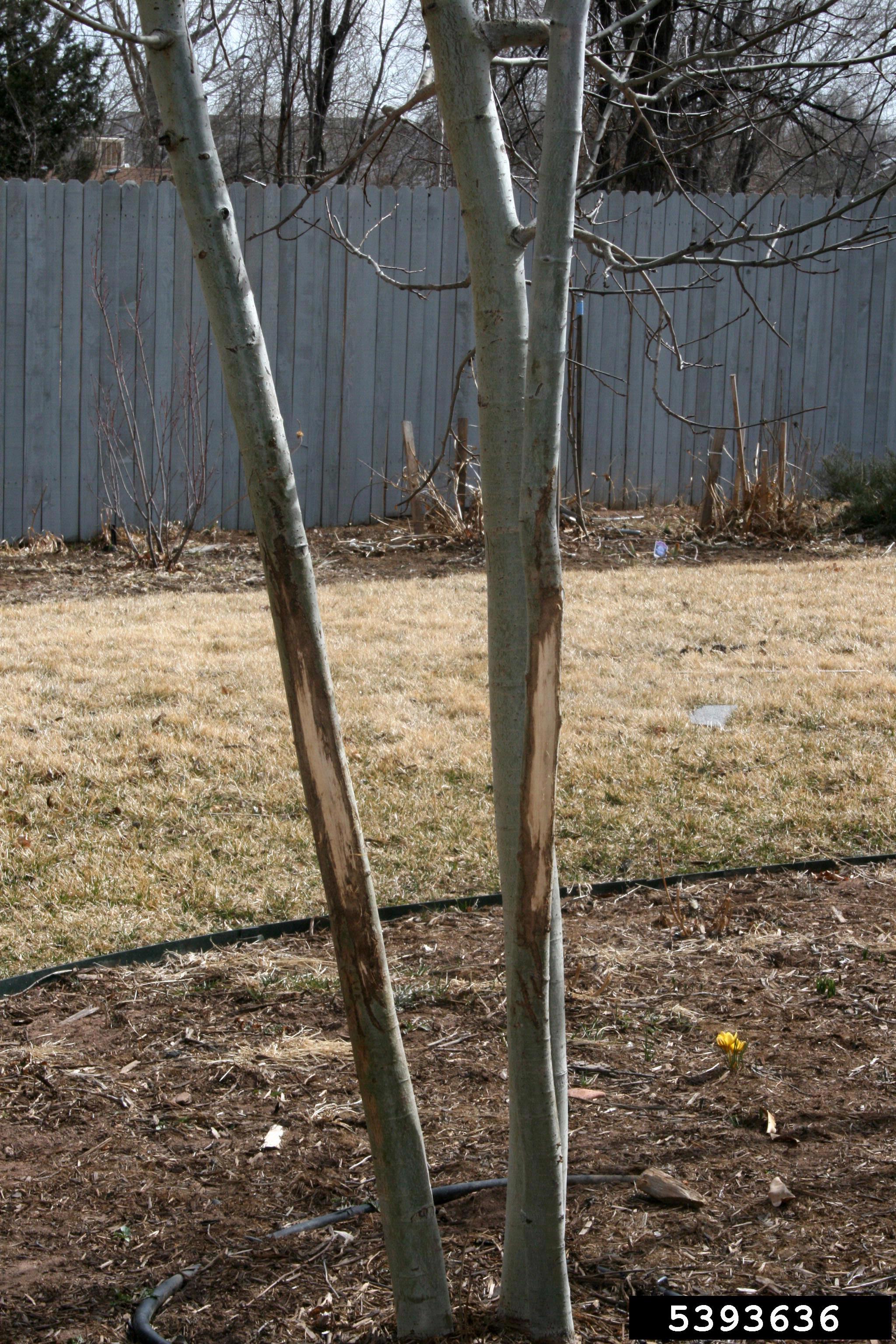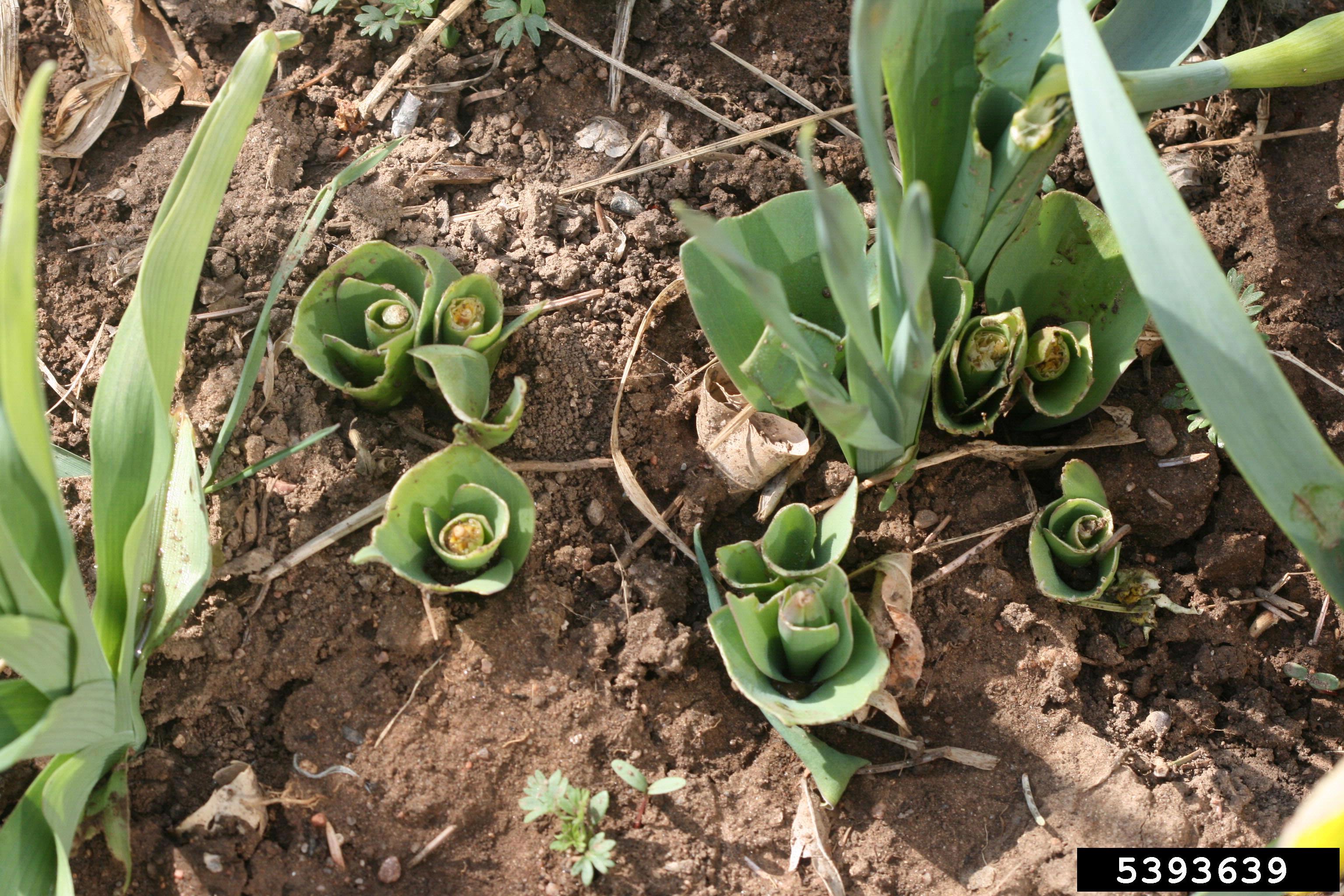 Coping with Deer in the Landscape - February 24, 2021 Jeff Schalau, Agent, Agriculture & Natural Resources University of Arizona Cooperative Extension, Yavapai County In Yavapai County, mule deer (Odocoileus hemionus) are the predominant deer species. The mule deer gets its name from its large ears. Coat color is reddish-brown in summer, turning to a blue-gray in winter. Its forehead is much darker than its face, while its throat, belly and inner leg are white. Mule deer have white rump patches and short, narrow, black-tipped white tails. Deer can be very destructive to gardens and landscapes: especially during dry periods when they are more attracted to irrigated areas. Deer are typically browsers of woody plants. They eat buds and twigs in winter, tender shoots in spring, and browse leaves in summer. Male deer can also damage bark and break trees in the fall when they are removing velvet from their antlers. In high elevation forests, deer will browse on tender new growth of conifers such as Douglas-fir, true fir, juniper, and some pines. As the foliage hardens off during summer, conifers become less palatable. Conifers with large, stiff needles (such as Austrian pine) are more likely to be left alone. Deciduous fruit trees and grape vines are among deer’s favorite foods. In the landscape, roses and Euonymus are also preferred. Deer will occasionally eat grass, young vegetable shoots, flowers, and bulbs. Tall shrubs tend to withstand deer browsing better than low growing ones because they have more leaves making them able to withstand some defoliation and taller branches are out of reach. I have seen apple trees that have little foliage below seven feet but are fine above that point. Here, deer were standing up on their hind legs and browsing everything within reach. For a list of deer resistant plants, see the University of Arizona Cooperative Extension publication: Deer and Rabbit Resistant Plants which is linked to the online edition. Deer may change their diet preferences depending on availability of alternative food sources. This means that when preferred forage is lacking, other “novel” plant species may be eaten. Fencing is the only long-term solution. The fence should be at least 8 feet tall and constructed out of woven wire, high tension wire, UV stabilized vinyl mesh, or other strong, durable material. Deer can and will jump fences under 8 feet. Small areas can be protected with shorter fences (4 to 6 feet) as deer do not like to jump into small enclosed spaces. Another design utilizes the small area concept by placing two fences 38 inches apart. In this design, the deer feel unable to clear both fences without injury. Woven wire cages can also be built to protect individual plants but they must be sturdy and well-anchored. Electric fences can also be employed. At least two wires will be needed: one at 18 inches and another at 36 inches above ground. While they could jump over the wires, they prefer to crawl under and will touch the lower wire in doing so. Some people also use a third wire placed at 24 inches above ground. If you want to attract them to nuzzle the wire, put a little peanut butter inside some aluminum foil on it. Once shocked, they are more likely to avoid the fenced area. Remember to attach warning signs to alert people to the electric fence. However, keep in mind that deer are game species in Arizona and deer management information developed in other states may not be legal in Arizona. Some people do not care for fences (or cannot use them due to local ordinances). In these situations, repellents (contact or area) may be worth trying. Contact repellents are applied directly to the plant and repel by taste. Area repellents repel deer by odor alone. Drawbacks to repellents are: most can only be applied to non-edible crops, the effect is temporary, new growth not treated with contact repellents is not protected, deer may habituate (become used to) to the repellent, and, if deer want something bad enough, they will often find a way to get it. While many people swear that nylon stockings filled with human hair and bars of soap repel deer, these home remedies are typically not as reliable as products labeled as deer repellents. Dogs may also help prevent deer damage in areas where they have access, assuming they are present at night. You can follow the Backyard Gardener on Twitter – use the link on the BYG website. If you have other gardening questions, email the Master Gardener Help Desk in Prescott (prescottmg@gmail.com) or Camp Verde (verdevalleymg@gmail.com) and be sure to include your name, location, and phone number. Find past Backyard Gardener columns or provide feedback at the Backyard Gardener web site: https://cals.arizona.edu/yavapai/anr/hort/byg/. Images  Mule deer (Odocoileus hemionus) are the prevalent deer species in Yavapai County, Arizona (Photo by Terry Spivey, USDA Forest Service, Bugwood.org).
Mule deer (Odocoileus hemionus) are the prevalent deer species in Yavapai County, Arizona (Photo by Terry Spivey, USDA Forest Service, Bugwood.org). Male deer rub the felt from their antlers on smooth-barked trees. They especially like aspen trees for this purpose (Photo by Whitney Cranshaw, Colorado State University, Bugwood.org).
Male deer rub the felt from their antlers on smooth-barked trees. They especially like aspen trees for this purpose (Photo by Whitney Cranshaw, Colorado State University, Bugwood.org). Tulips that were eaten by deer (Photo by Whitney Cranshaw, Colorado State University, Bugwood.orga).
Tulips that were eaten by deer (Photo by Whitney Cranshaw, Colorado State University, Bugwood.orga).Additional Resources Deer and Rabbit Resistant Plants, University of Arizona Cooperative Extension extension.arizona.edu/sites/extension.arizona.edu/files/pubs/az1237.pdf Preventing Deer Damage, Colorado State University Extension extension.colostate.edu/topic-areas/natural-resources/preventing-deer-damage-6-520/ Deer Management for Home Gardeners Using a Two-Teired Fence System,Clemson Cooperative Extension hgic.clemson.edu/factsheet/deer-management-for-home-gardeners-using-a-two-tiered-fence-system/ |